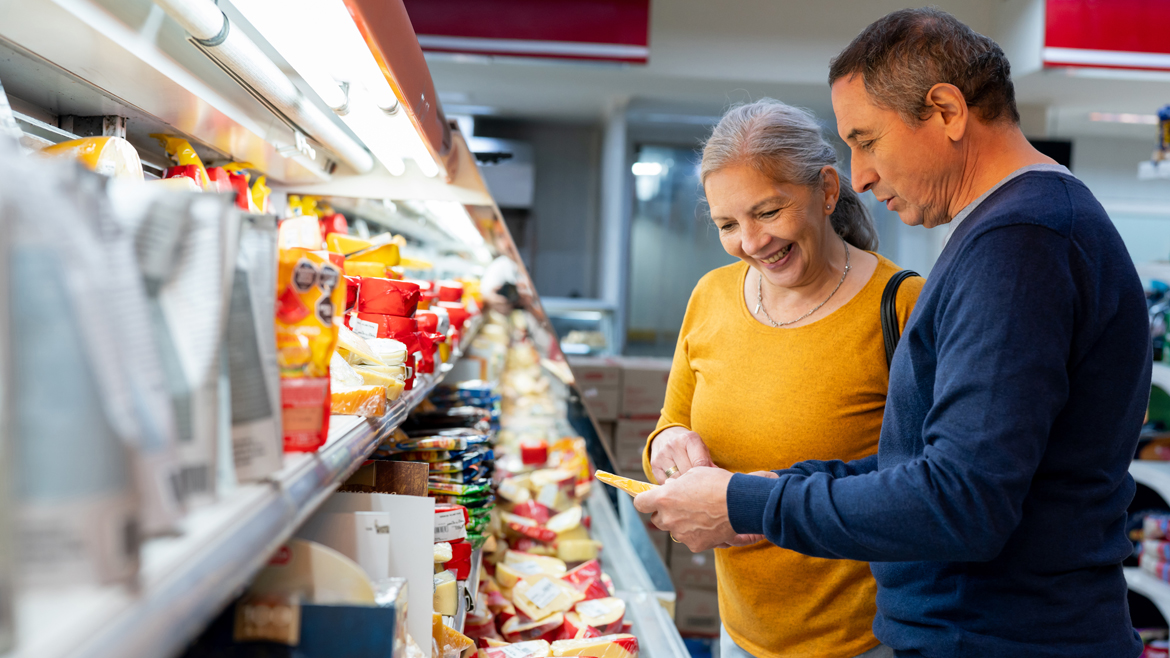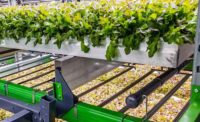Convenience, affordability and diverse flavors will be key ingredients in the recipe for success in 2024.
Circana’s food and beverage outlook for the New Year is cautiously optimistic, predicting a promising year ahead.
The deli is forecast to be one of the greatest growth areas in terms of sales and consumer engagement in 2024, throughout all grocery departments, in part because it’s an area of multiple “entry price points,” said Sally Lyons Wyatt, executive vice president and practice leader at Circana.
“Instead of having somebody slice it out, weigh it for you and hand it back, you have some pre-sliced meats that are at an entry price point that (the consumer) is willing to afford. You've got some of the prepackaged sandwiches and things like that that you can grab and go. So it made sense that the deli was winning with those things because it had a little bit for anyone,” she said. “We think every producer and manufacturer needs to be looking at entry point options as well as premium options. Those two are the ones we see growing. And again, it might need to take doing some work with consumers to make sure you have the right offering for the right price.”
“Dairy deflation will help hopefully increase volume. Refrigerated (foods) we think should have an opportunity to grow volume,” she said.
Circana has suggested that success in the frozen aisles will hinge on offering diverse product assortments at the right price points.
The frozen food department added more than $10 billion in sales over the past three years, but the growth was inflation-driven, as unit and volume sales decreased for the majority of categories, according to the American Frozen Food Institute (AFFI).
The core consumer accounts for about 38% of all frozen food shoppers. They have ample freezer space, typically plan meals involving frozen foods and have more positive perceptions of the quality and nutrition of frozen food. They also have a greater tendency to browse aisles for new items and “can serve as an interesting blueprint for growth to help move light and medium shoppers into higher consumption frequencies,” according to AFFI’s 2023 Power of Frozen report, a survey of over 1,700 consumers conducted by 210 Analytics.

Shoppers pay around 25%-30% more for groceries than they did three years ago. The AFFI 2023 Power of Frozen found:
- Potato-based products, including frozen French fries, have experienced above-average inflation.
- Frozen fruit has been a strong performer with growth in dollars and pounds.
- Meals and desserts (including ice cream) are among the “sales powerhouses,” driving trips down the frozen aisle.
- Processed meat and poultry, like chicken nuggets and sausage, is the only area that grew in units over the past year.
- In overall F&B, seafood, meat and poultry, and beverages experienced the greatest unit pressure over the past year.
The root cause of the declines in units and volume underscores the importance of “trip optimization,” with AFFI suggesting manufacturers and retailers can benefit from using cross-merchandising, and demonstrating the convenience, ease of preparation and value over restaurants or takeout.
For many refrigerated and frozen manufacturers and processors, dinner is the winner. Low-prep meals and the continuance of a “snacking lifestyle” are expected to be key influences in product development in 2024.
More than eight in 10 frozen food consumers occasionally or often rely on frozen foods as the main component for dinner — making it the largest meal occasion for the frozen food department. However, the opportunity gap between the overall engagement and core consumers is the largest for lunch, the AFFI research found.
Global flavors, new spices and fermented foods like kimchi – all reflected in new products introduced in 2023 – are expected to continue to grow in popularity and appearance on menus.
T. Hasegawa USA, a global F&B flavor manufacturer, named ube as its "flavor of the year.” A bright purple tuberous root hailing from the Philippines, ube offers a multitude of applications ranging from savory dishes such as purple mashed potatoes, gnocchi and sauces to infusing a twist into desserts, baked goods and even beverages.
Packaging Priorities
In the New Year, food manufacturers and processors should pay close attention to the implementation of legislation affecting packaging, like the extended producer responsibility (EPR) laws in California, Colorado, Maine and Oregon. While none of them will be in full effect until the summer of 2025 (in Colorado and Oregon), performance goals for recyclability, recycled content and source reduction will become more prevalent, said Dan Felton, executive director of AMERIPEN, which focuses on U.S. public policy for the entire packaging industry, from material producers to brand owners to recycling partners.
“We will also continue to see many other states considering packaging EPR legislation in 2024,” Felton said. “Other policies that AMERIPEN expects to continue to be under consideration in 2024 (primarily at the state level) that could affect packaging choices for food manufacturers and processors are labeling for recyclability, reusability and compostability; recycled content mandates for different types of packaging formats and materials; and chemicals in packaging. Specific to recycled content, we expect to see legislation introduced in Washington State to expand their existing recycled content mandate law from 2021 to different plastic packaging formats and resins. While the existing law does not impact refrigerated and frozen foods other perhaps some beverages, the proposed legislation will very likely impact refrigerated and frozen foods to some extent. This in contrast to the New Jersey recycled content mandate law that went into full effect January 1 but exempts all foods for at least five years.”

F&B manufacturers and processors have an opportunity to capitalize on size shifts.
The Power of Frozen found opportunity in packaging variety: 20% of survey respondents have switched to smaller packages to save, whereas 44% are leaning to larger/family-size packages. This may reflect the decline in trips seen over the past year. Hitting a price point that keeps households engaged may lead to more package size variety depending on the channel or different package sizes within one store.
“We lost a little bit of that during COVID, when retailers and producers/manufacturers, everyone was just trying to get products out to get them on the shelf. We lost a lot of assortment. We lost a lot of size variety,” Wyatt said. “The word that I keep using with everyone is ‘consumer shifts.’ They're still eating and drinking. They're shifting in the choices that they make on where they eat, what they eat, how they eat – all of it.”




